
CEPLENE 0.5 mg/0.5 ml INJECTABLE SOLUTION

How to use CEPLENE 0.5 mg/0.5 ml INJECTABLE SOLUTION
Introduction
Package Leaflet: Information for the User
Ceplene 0.5 mg/0.5 ml solution for injection
histamine dihydrochloride
This medicine is subject to additional monitoring, which will allow for quick identification of new safety information. You can help by reporting any side effects you may get. The last section of this leaflet includes information on how to report side effects.
Read all of this leaflet carefully before you start using this medicine, because it contains important information for you.
- Keep this leaflet, you may need to read it again.
- If you have any further questions, ask your doctor, pharmacist, or nurse.
- This medicine has been prescribed for you only. Do not pass it on to others, as it may harm them, even if their symptoms are the same as yours.
- If you experience any side effects, talk to your doctor or pharmacist. This includes any possible side effects not listed in this leaflet. See section 4.
Contents of the pack
- What Ceplene is and what it is used for.
- What you need to know before you use Ceplene.
- How to use Ceplene.
- Possible side effects.
- Storing Ceplene.
- Contents of the pack and other information.
1. What Ceplene is and what it is used for
Ceplene belongs to a group of medicines called immunomodulators. These medicines help the body's immune system to fight diseases such as cancer, by improving the natural ability of the immune system to fight diseases. The active substance in Ceplene is histamine dihydrochloride, which is identical to a substance produced naturally by the body. It is given together with low doses of interleukin-2 (IL-2), another medicine that helps the immune system to fight diseases such as cancer.
Ceplene is used in adults, together with IL-2, to treat a specific type of leukemia called acute myeloid leukemia (AML), a type of blood cancer that produces cells in the bone marrow. It is used to maintain remission (the period when the disease is less severe or when it is not detected). Ceplene, given together with IL-2, will help your immune system to attack the cancer cells that remain after previous cancer treatment.
During treatment, you will always use IL-2 and Ceplene. If you have any questions about Ceplene or IL-2, ask your doctor.
2. What you need to know before you use Ceplene
Do not use Ceplene
- if you are allergic (hypersensitive) to histamine or any of the other ingredients of this medicine (listed in section 6).
- if you have severe heart problems.
- if you are taking any of the following medicines:
- steroids, such as prednisone and dexamethasone; these are used to suppress the activity of the immune system (immunosuppressant) and reduce inflammation.
- clonidine, a medicine used to lower blood pressure.
- antihistamines H2 such as cimetidine, ranitidine, famotidine, or nizatidine, which are used to treat gastrointestinal ulcers, indigestion (dyspepsia), or heartburn.
- if you have received a hematopoietic stem cell transplant (a type of bone marrow transplant) from a donor.
- if you are pregnant.
- while breastfeeding.
Warnings and precautions
Talk to your doctor or pharmacist before starting Ceplene.
Ceplene and IL-2 must not be injected at the same time. IL-2 should be injected first. The dose of Ceplene should be injected between 1 and 3 minutes later.
Ceplene should be injected slowly into the layer of tissue under the skin (subcutaneously) over a period of approximately 5 to 15 minutes. A rapid injection can cause a drop in blood pressure and make you feel weak, and may even cause you to faint.
You will start treatment with Ceplene in a clinic, under the supervision of a doctor. You will be monitored to check your response to treatment. Your doctor will check your blood pressure, heart rate, and lung activity. You will also have some blood tests during treatment.
If you have had any of the following diseases, you will be monitored in the hospital for the following days or cycles of treatment:
- bleeding ulcers,
- stroke,
- artery narrowing (peripheral systemic arteriopathy),
- heart disease (for acute heart problems, see above "Do not use Ceplene"),
- a history of autoimmune disease (a disease in which the immune system attacks the body's own cells or tissues, such as systemic lupus, rheumatoid arthritis, inflammatory bowel disease, or psoriasis).
If you are taking any other medicines mentioned in "Other medicines and Ceplene" or if you are going to have an operation or an X-ray examination that requires an injection, talk to your doctor.
If you have an infection, your doctor will pay special attention to your monitoring. If you have had an infection in the 14 days before starting this treatment that requires you to take medicines for infections (antibiotics, antifungals, or antivirals), your doctor will pay special attention to your monitoring.
If you have kidney problems, talk to your doctor before taking this medicine. A drop in blood pressure may occur.
If you have liver problems, talk to your doctor before taking this medicine. Your doctor may need to change the dose.
Children and adolescents
Ceplene is not recommended for use in children and adolescents, as there is no information on the use of this medicine in this age group.
Other medicines and Ceplene
Tell your doctor or pharmacist if you are using or have recently used or might use any other medicines, including those obtained without a prescription.
If you are using any of the following medicines, make sure to talk to your doctor or pharmacist before using Ceplene. Some of them are incompatible with Ceplene treatment, while others require special precautions:
- Steroids,such as prednisone and dexamethasone; these are used to suppress the activity of the immune system (immunosuppressant) and reduce inflammation (see above "Do not use Ceplene").
- Antihistamines H2such as cimetidine, ranitidine, famotidine, or nizatidine. These are used to treat gastrointestinal ulcers, indigestion (dyspepsia), or heartburn (see above "Do not use Ceplene").
- Antihistaminesused to treat allergies.
- Certain antipsychoticssuch as chlorpromazine, flupentixol, thioridazine, clozapine, and risperidone; these are used to treat mental disorders.
- Tricyclic antidepressantssuch as amitriptyline, imipramine, or monoamine oxidase inhibitorssuch as phenelzine, isocarboxazid, tranylcypromine, or moclobemide. These are used to treat depression.
- Anti-malarial medicines or medicines used to treat infections that cause narcolepsy.
- Beta-blockerssuch as propranolol, metoprolol, atenolol. These are used for angina and heart rhythm disorders.
- Any treatment for high blood pressure(e.g., thiazide diuretics [bendroflumethiazide], ACE inhibitors [captopril], calcium antagonists [nifedipine], and alpha-blockers [prazosin]).
Also, if you are going to have an operationor a special X-ray examinationthat requires an injection, make sure your doctor knows that you are using Ceplene. Some medicines used in an operation (e.g., neuromuscular blockers and narcotic analgesics) or dyes used for certain radiological tests may interfere with this medicine.
Pregnancy and breastfeeding
There is no information on the use of Ceplene in pregnant women. Therefore, treatment with Ceplene and IL-2 should not be used during pregnancy.
Patients undergoing this treatment, whether male or female, should use an effective contraceptive method, as it is essential to avoid conception during treatment with Ceplene and IL-2.
It is not known whether Ceplene is excreted in breast milk. Therefore, Ceplene and IL-2 should not be used during breastfeeding.
Talk to your doctor or pharmacist before using any medicine.
Driving and using machines
Do not drive or use machines for 1 hour after injecting Ceplene, as this medicine may lower your blood pressure and cause dizziness, slight drowsiness, and blurred vision. This may affect your ability to drive or use machines.
3. How to use Ceplene
Follow the instructions for administering Ceplene exactly as your doctor has told you. If you are unsure, ask your doctor, pharmacist, or nurse again.
This treatment should be prescribed and supervised by a doctor with specialized knowledge of acute myeloid leukemia.
Recommended dose
Since you will be using IL-2 and Ceplene in combination, information is provided on both doses:
Interleukin-2 (IL-2)
IL-2 is injected twice a day by subcutaneous injection (into the layer of tissue just under the skin) 1 to 3 minutes before the injection of Ceplene. The dose is calculated based on your body weight. Your doctor will tell you what this amount is and how to inject the dose.
Ceplene
The usual dose of Ceplene is 0.5 ml of solution twice a day, administered by slow subcutaneous injection (into the layer of tissue just under the skin).
The dose of Ceplene should be injected between 1 and 3 minutes after the dose of IL-2.
Both medicines, IL-2 and Ceplene, should be injected twice a day, with a minimum interval of 6 hours between injections.
Periods with and without treatment:
Treatment with IL-2 and Ceplene lasts 81 weeks and is cyclical.
- During the first 18 weeks: you will use IL-2 and Ceplene daily for 3 weeks and then rest for 3 weeks (without administering any treatment).
- During the remaining 63 weeks: you will use IL-2 and Ceplene daily for 3 weeks and then rest for 6 weeks (without administering any treatment).
If you inject the dose of Ceplene yourself:
Your doctor may decide that it is more convenient for you to inject IL-2 and Ceplene yourself.
Your doctor or nurse will teach you how to do this. Do not attempt to give yourself injections if you have not been taught how to do so by a qualified professional.
It is recommended that you are always accompanied when injecting this medicine, by an adult family member, friend, or caregiver who can help you in case you feel dizzy or faint.
For more instructions on how to inject this medicine yourself, read the section "INSTRUCTIONS FOR INJECTING CEPLENE" at the end of this leaflet.
Your doctor may recommend using an injection pump to regulate the injection of Ceplene. If you use an injection pump, you should follow the manufacturer's instructions for the pump and the instructions of your doctor or nurse.
If you use more Ceplene than you should
You should use the exact amount of medicine that has been prescribed for you. If you accidentally inject more than you should, contact your doctor or pharmacist immediately.
If you forget to use Ceplene
Do not give yourself an extra dose to make up for forgotten doses. Follow the treatment as prescribed. If you have forgotten any of the daily doses, contact your doctor or pharmacist.
If you stop using Ceplene
If you want to stop your treatment with Ceplene, you should talk to a doctor. Inform your doctor immediately if you stop using Ceplene on your own.
If you have any other questions about the use of this medicine, ask your doctor or pharmacist.
4. Possible side effects
Like all medicines, this medicine can cause side effects, although not everybody gets them.
Side effects seen when using Ceplene as described in this leaflet:
Very common side effects include low blood pressure (hypotension) which can lead to dizziness and fainting. If you notice a significant drop in blood pressure after using Ceplene, contact your doctor immediately or at least before the next injection of Ceplene.
Very common side effects(may affect more than 1 in 10 people)
- Upper respiratory tract infections
- Increased number of a certain type of white blood cell in the blood (eosinophilia) and decreased number of platelets (thrombocytopenia).
- Headaches and dizziness.
- Taste disturbance (dysgeusia).
- Fast heart rate (tachycardia).
- Flushing.
- Cough, difficulty breathing (dyspnea).
- Nausea, indigestion (dyspepsia), and diarrhea.
- Rash.
- Muscle and joint pain (myalgia and arthralgia).
- Inflamed and granulated skin at the injection site, fatigue, fever (pyrexia), redness at the injection site, feeling of heat, reaction at the injection site, itching at the injection site, flu-like symptoms, chills (shivering), swelling at the injection site, and pain.
Common side effects(may affect up to 1 in 10 people)
- Decreased number of white blood cells in the blood (leukopenia).
- Decreased number of a certain type of white blood cell in the blood (neutropenia).
- Lung inflammation (pneumonia).
- Loss of appetite (anorexia).
- Difficulty sleeping (insomnia).
- Feeling of heartbeat (palpitations).
- Nasal congestion.
- Vomiting, abdominal pain, and dry mouth.
- Stomach inflammation (gastritis).
- Abdominal swelling (abdominal distension).
- Abnormal redness of the skin (erythema), increased sweating (hyperhidrosis), night sweats, and itching (pruritus).
- Back pain and pain in the limbs.
- Hives, bruising, rash, and swelling at the injection site, weakness (asthenia), and chest pain.
Additional side effects seen when using Ceplene in other types of treatment:
Very common side effects(may affect more than 1 in 10 people)
- Dry skin.
- Anxiety.
- General feeling of discomfort or unease.
- Fluid retention in the body, especially in the legs (edema).
- Weight loss.
Common side effects(may affect up to 1 in 10 people)
- Dizziness (vertigo).
- Your body does not produce enough thyroxine, a type of chemical in the body known as a hormone (hypothyroidism).
- Decreased number of red blood cells (anemia).
- Loss of body water (dehydration).
- Depression.
- Numbness, itching, or tingling of the skin (paresthesia).
- Hot flashes.
- Wheezing.
- Constipation, bloated stomach, inflamed mouth.
- Pain and formation of extra tissue in the skin around the injection site.
Reporting of side effects
If you experience any side effects, talk to your doctor, pharmacist, or nurse. This includes any possible side effects not listed in this leaflet. You can also report side effects directly through the national reporting system listed in Appendix V. By reporting side effects, you can help provide more information on the safety of this medicine.
5. Storing Ceplene
Keep this medicine out of the sight and reach of children.
Do not use Ceplene after the expiry date which is stated on the carton and the label of the vial. The expiry date is the last day of the month stated.
Do not freeze.
Before administration, visually inspect the solution for particles and discoloration. The solution should be clear and colorless.
Medicines should not be disposed of via wastewater or household waste. Ask your pharmacist how to dispose of medicines no longer required. This will help protect the environment.
6. Container Contents and Additional Information
Ceplene Composition
- The active ingredient is histamine dihydrochloride. Each vial contains 0.5 mg of histamine dihydrochloride in a 0.5 ml solution.
- The other ingredients are water for injectables and sodium chloride. It may also contain sodium hydroxide and/or hydrochloric acid to adjust the pH.
Appearance of Ceplene and Container Contents
Ceplene is a clear and colorless liquid. It is marketed in a glass vial with a gray rubber stopper and a blue aluminum flip-off cap that is clearly distinguishable on the seal.
Ceplene is available in packs of 14 vials.
Marketing Authorization Holder
Laboratoires Delbert
49 Rue Rouelle
75015 Paris
France
Manufacturer
Labiana Pharmaceuticals, S.L.U.
C/ Casanova, 27-31
08757 Corbera de Llobregat (Barcelona)
Spain
You can request more information about this medication by contacting the local representative of the marketing authorization holder:
België/Belgique/Belgien Meda Pharma S.A./N.V. Chaussée de la Hulpe 166 Terhulpsesteenweg 166 B-1170 Brussels Tél/Tel: +32 (0)2 5 04 08 11 | Lietuva Meda Pharma SIA Ukmerges g. 369A LT-12142 Vilnius Tel.: +370 52059367 |
България Меда Фарма ЕООД ул. „Позитано“ 1 1303 София Тел.: +359 2 4177977 | Luxembourg/Luxemburg Meda Pharma S.A./N.V. Chaussée de la Hulpe 166 Terhulpsesteenweg 166 B-1170 Brussels Belgique / Belgien Tél/Tel: +32 (0)2 5 04 08 11 |
Ceská republika MEDA Pharma s.r.o. Kodanská 1441 / 46 CZ-100 10 Praha 10 Tel: +420 234 064 201 | Magyarország MEDA Pharma Hungary Kereskedelmi Kft. H-1139 Budapest Váci ut 91 Tel: +36 1 236 3410 |
Danmark Meda AS Solvang 8 DK-3450 Allerød Tlf: +45 44 52 88 88 | Malta Alfred Gera & Sons Ltd. 10 Triq Il Masgar Qormi MT-3217 Qrm Tel: +356 21 446205 |
Deutschland MEDA Pharma GmbH & Co. KG Benzstraße 1 D-61352 Bad Homburg Tel: +49 (0) 6172 888 01 | Nederland MEDA Pharma B.V. Krijgsman 20 NL-1186 DM Amstelveen Tel: +31 (0)20 751 65 00 |
Eesti Meda Pharma SIA Parda tn 4 EE-10151 Tallinn Tel: +372 62 61 025 | Norge Meda A/S Askerveien 61 N-1384 Asker Tlf: +47 66 75 33 00 |
Ελλάδα MEDA Pharmaceuticals A.E. Ευρυτανίας, 3 GR-15231 Χαλάνδρι-Αττική Τηλ: +30 210 6 77 5690 | Österreich MEDA Pharma GmbH Guglgasse 15 A-1110 Wien Tel: + 43 (0)1 86 390 0 |
España Laboratoires Delbert 49 Rue Rouelle 75015 Paris Francia | Polska Meda Pharmaceuticals Sp.z.o.o. ul. Domaniewska 39A PL-02-672 Warszawa Tel: +48 22 697 7100 |
France MEDA Pharma 40-44 rue Washington F-75016 Paris Tél: +33 (0)1 56 64 10 70 | Portugal MEDA Pharma - Produtos Farmacêuticos, S.A. Rua do Centro Cultural, 13 P-1749-066 Lisboa Tel: +351 21 842 0300 |
Hrvatska Medical Intertrade d.o.o. Dr. Franje Tudmana 3 10431 Sveta Nedelja Tel: +385 1 3374 010 | România Meda Pharmaceuticals Switzerland GmbH, Reprezentanta Calea Floreasca, Primul District 141-143 – RO Bucuresti Tel.: +40212309030 |
Ireland Meda Health Sales Ireland Ltd. 34/35 Blok A Dunboyne Business Park Dunboyne IRL-Co Meath Tel: +353 1 802 66 24 | Slovenija MEDA Pharmaceuticals Switzerland GmbH, Podružnica Ljubljana Cesta 24. junija 23 SI-1231 Ljubljana Tel: +386 (0)59 096 951 |
Ísland Meda AB Box 906 S-170 09 Solna Svíþjóð Sími: +46 8 630 1900 | Slovenská republika MEDA Pharma spol. s. r.o. Trnavská cesta 50 SK-821 02 Bratislava Tel: +421 2 4914 0172 |
Italia Meda Pharma S.p.A. Via Felice Casati, 20 I-20124 Milano Tel: + 39 039 73901 | Suomi/Finland Meda Oy Vaisalantie 4/Vaisalavägen 4 FI-02130 Espoo/Esbo Puh/Tel: +358 20 720 9550 |
Κύπρος MEDA Pharmaceuticals A.E. Ευρυτανίας, 3 GR-15231 Χαλάνδρι-Αττική Τηλ: +30 210 6 77 5690 Ελλάδα | Sverige Meda AB Box 906 S-170 09 Solna Tel: +46 (0)8 630 1900 |
Latvija Meda Pharma SIA Ojara Vacieša iela 13 LV-1004 Riga Talr: +371 7 805 140 | United Kingdom Meda Pharmaceuticals Ltd. Skyway House Parsonage Road Takeley Bishop´s Stortford CM22 6PU - UK Tel.: + 44 845 460 0000 |
Date of Last Revision of this Leaflet:
This medicinal product has been authorized under “Exceptional Circumstances”. This means that due to the rarity of the disease, it has not been possible to obtain complete information on this medicinal product. The European Medicines Agency will review any new information that may become available every year and this leaflet will be updated as necessary.
Detailed information on this medicinal product is available on the European Medicines Agency website: http://www.ema.europa.eu. There are also links to other websites on rare diseases and orphan medicines.
INSTRUCTIONS FOR SELF-INJECTING CEPLENE
This section contains information on how to self-inject Ceplene.
For information on dosage and how to use Ceplene and IL-2, see section 3, "How to use Ceplene".
Read the following instructions carefully. It is essential that you do not attempt to inject yourself unless your doctor or nurse has explained how to do it. If you are unsure about how to inject yourself or have doubts, ask your doctor or nurse.
If you feel weak or dizzy during or after the injections, tell your doctor before injecting the next dose. Your doctor may want to increase the time the injection takes or change the dose.
You will need to inject Ceplene and IL-2 doses twice a day through a subcutaneous injection (in the layer of tissue just under the skin), following your doctor's instructions.
Always inject IL-2 first. You must inject the Ceplene dose between 1 and 3 minutes later.
Ceplene should not be mixed with any other product or diluted.
Your doctor will explain how to prepare and inject IL-2.
It is recommended that you always have someone with you when you inject Ceplene, such as an adult family member, friend, or caregiver who can help you if you feel dizzy or faint.
PREPARATION FOR CEPLENE INJECTION
To prepare a dose of Ceplene, you will need the following:
- 1 vial of Ceplene solution (0.5 ml).
- 1 sterile graduated syringe with a needle.
- 1 alcohol swab.
Method
- Remove a vial from the box. Check the expiration date (EXP) on the vial label.
- Do not use it if the last day of the month shown on the label has passed.
- Wash your hands thoroughly with soap and water.
- Recheck the vial label to ensure you are using the correct medication. The solution should be clear and colorless. If it is not, use another vial and inform your doctor or pharmacist.
- Remove the plastic cap from the vial, exposing the rubber stopper with the inner circle.
- Use an alcohol swab to clean the rubber part of the stopper. Do not touch the stopper with your hands.
- Take the sterile syringe. Note the numbered marks on it. Each mark (0.1, 0.2, 0.3, etc.) represents a tenth of a milliliter (0.1 ml). Without removing the needle cap, pull the plunger and draw air into the syringe up to the level (number of milliliters) indicated by your doctor. See Figure 1.
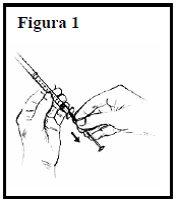
- Remove the needle cap. With the vial on a flat surface, insert the needle into the vial through the rubber stopper.
- Press the syringe plunger to inject air into the vial. See Figure 2.
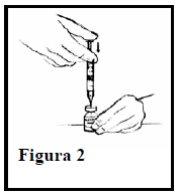
- Holding both the vial and the syringe, turn the vial upside down. Adjust the syringe so that the tip of the needle protrudes slightly above the rubber stopper, but always remains within the solution. See Figure 3.
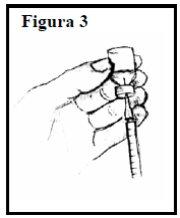
- Slowly pull the plunger to transfer the solution to the syringe, filling it up to the level (number of milliliters) indicated by your doctor. If bubbles appear in the syringe, slowly reintroduce the solution into the vial and reextract the solution.
- Remove the needle from the vial. Do not leave the syringe upside down or allow the needle to come into contact with any object or substance.
- Replace the needle cap. Place the syringe on a clean, flat surface.
- A small amount of solution may remain in the vial. You should return it to the pharmacist for recycling.
NOTE: The Ceplene vial contains an overfill to facilitate the extraction of 0.5 ml of individual dose.
- Recheck the syringe to ensure you have extracted the correct amount.
- Hold the syringe and follow the "INJECTION INSTRUCTIONS" provided below.
INJECTION INSTRUCTIONS
Normally, you will inject two doses of 0.5 ml per day, unless your doctor has prescribed a lower dose.
For the injection, you will need the following:
- 1 syringe prepared for IL-2 injection (see the IL-2 package leaflet and the dosage instructions given by your doctor).
- 1 prepared syringe containing the Ceplene dose.
- One or more alcohol swabs.
- A timer or clock with a second hand.
- A puncture-proof container to safely dispose of used syringes.
Method
- Find a comfortable and well-lit place to sit and recline. Place the prepared syringes with IL-2 and Ceplene, and an alcohol swab, within reach. For your safety, it is essential that you sit in a place where you can recline or lie down when injecting.
- Inject IL-2 as you have been instructed.
- Wait between 1 and 3 minutes.
- Decide which part of your body to inject Ceplene into. You can choose from the inside or outside of your thighs, arms, or stomach. Do not inject Ceplene and IL-2 in the same area.For example, if you inject IL-2 into your left arm, you could inject Ceplene into your left thigh or right thigh, stomach, or right arm. Always change the injection site. In Figure 4, the areas where you can inject are shown.
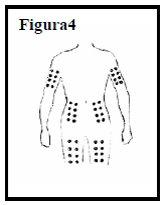
- Make sure the skin area you choose is visible. Use an alcohol swab to clean it. Let the area dry for 10 seconds.
- Pinch the cleaned skin area between your thumb and index finger, without squeezing. See Figure 5.
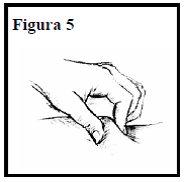
- Hold the needle vertically (90°) or at a 45° angle to the skin and, in a rapid motion, insert it under the skin until it reaches the hub. You should insert the needle under the skin, but not into a blood vessel. See Figure 6.
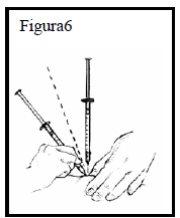
- Slowly press the plunger. If blood appears, do not inject Ceplene because this will mean that the needle has entered a blood vessel.Remove the syringe and dispose of it as you have been taught. Gather what you need and start the process again, even if 3 minutes have passed since the IL-2 injection.
- Look at the numbered marks on the syringe. Each mark (0.1, 0.2, 0.3, etc.) represents a tenth of a milliliter (0.1 ml).
- Press the syringe plunger and inject one-tenth of a milliliter (0.1 ml) per minute, or more slowly if your doctor has instructed you to do so. See Figure 7.
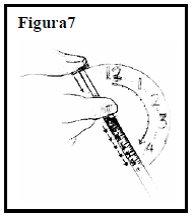
- Never inject Ceplene quickly or all at once.
- When the syringe is empty, remove the needle from the skin.
- Gently press an alcohol swab over the injection site, without rubbing.
- Remain seated or lying down for 20 minutesafter injecting the Ceplene dose.
- Dispose of the syringe in the puncture-proof container as you have been instructed.
- Country of registration
- Active substance
- Prescription requiredYes
- Manufacturer
- CompositionCLORURO DE SODIO (4,3 mg mg), HIDROXIDO DE SODIO (E 524) (AJUSTE PH - mg)
- This information is for reference only and does not constitute medical advice. Always consult a licensed doctor before taking any medication. Oladoctor is not responsible for medical decisions based on this content.
- Alternatives to CEPLENE 0.5 mg/0.5 ml INJECTABLE SOLUTIONDosage form: INJECTABLE, UnknownActive substance: tasonerminManufacturer: Belpharma S.A.Prescription requiredDosage form: INJECTABLE, 20 mg glatiramer acetate / mlActive substance: glatiramer acetateManufacturer: Teva GmbhPrescription requiredDosage form: INJECTABLE, 40 mg/mlActive substance: glatiramer acetateManufacturer: Teva GmbhPrescription required




